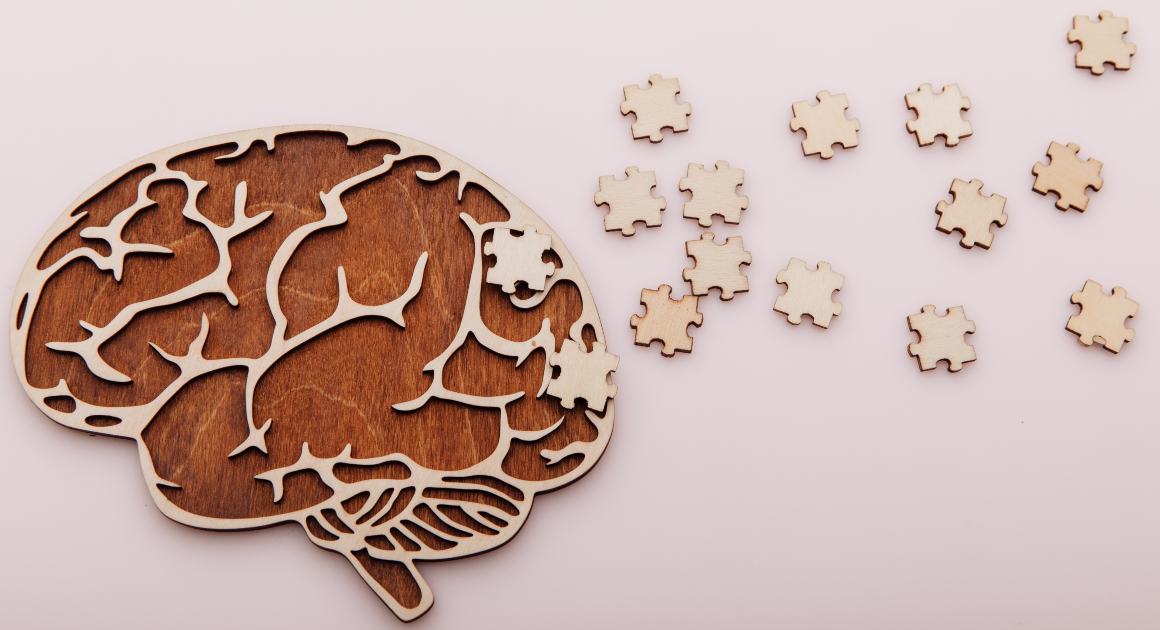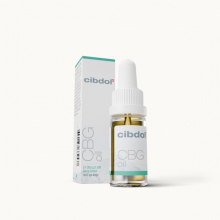Does CBG raise dopamine?
Published:
Dopamine is a crucial neurotransmitter involved in motivation, pleasure, cognition, motor control and more. Imbalances in dopamine signaling underlie many neuropsychiatric disorders. Some early research suggests the cannabis compound CBG may help regulate dopamine, but does the evidence support this?
Contents:
- What is Dopamine and What Does it Do?
- What Causes Dopamine Imbalances and Deficiencies?
- What is CBG and How Might It Affect Dopamine?
- Current Research on CBG for Conditions Involving Dopamine
- Potential Dopamine-Related Benefits of Taking CBG
- Considerations and Potential Risks of Using CBG
- Taking CBG for Dopamine: Dosage and Safety
- Lifestyle Changes That May Also Support Dopamine
- Fact Section
- Does CBG raise dopamine? Conclusion
- Resources used to write this article
This article reviews the current science on CBG and dopamine along with key considerations.

What is Dopamine and What Does it Do?
Dopamine is one of the main neurotransmitters in the brain. It is synthesized from the amino acid tyrosine and plays a role in:
- Reward, motivation and addiction
- Motor control and movement
- Mood, focus, learning and memory
- Sleep and dreaming
- Hormone and lactation regulation
Dopamine exerts its effects by binding to and activating five different dopamine receptor subtypes (D1-D5) located on neurons in various brain regions.
The mesolimbic and nigrostriatal dopamine pathways are especially involved in dopamine’s functions. Imbalances in dopamine neurotransmission contribute to conditions like Parkinson’s disease, ADHD, schizophrenia, and substance abuse disorders.
What Causes Dopamine Imbalances and Deficiencies?
There are various factors that can disrupt optimal dopamine signaling, including:
- Neurodegeneration of dopamine neurons like in Parkinson’s
- Toxins, infections or injury damaging dopamine pathways
- Poor nutrition lacking amino acid building blocks of dopamine
- Chronic stress and inflammation altering dopamine release
- Gene mutations affecting dopamine synthesis or receptors
- Drug abuse overstimulating/downregulating dopamine receptors
- Natural aging processes decreasing dopamine levels
- Excess MAO enzymes breaking down dopamine
- Antipsychotics, antinausea, and opioid drugs blocking dopamine
Restoring balanced dopamine levels through pharmaceuticals like L-DOPA or dopamine agonists can help manage some conditions. But side effects and varied efficacy drive interest in complementary options like CBG.
What is CBG and How Might It Affect Dopamine?
CBG stands for cannabigerol, a non-intoxicating compound in cannabis and hemp plants. Research indicates CBG may influence dopamine signaling through:
Inhibiting dopamine reuptake – Studies show CBG may block the dopamine transporter (DAT), increasing extracellular dopamine levels similarly to cocaine (though to a much lesser degree).
Altering release and neuronal firing – CBG is shown to stimulate firing of dopamine neurons. However, effects on dopamine release are complex, with both increases and decreases observed depending on factors like dose and species studied.
Modulating dopamine synthesis – There is some evidence CBG may increase production of dopamine through enhanced tyrosine hydroxylase activity.
Regulating dopamine receptors – CBG may act directly or indirectly on various dopamine receptor subtypes. Effects vary across studies.
In summary, through reuptake inhibition, altered neuronal firing patterns, increased synthesis, and receptor interactions, CBG appears able to modulate dopamine signaling in different ways. But does this translate to therapeutic effects?
Current Research on CBG for Conditions Involving Dopamine
Unfortunately, studies specifically examining CBG for disorders with dopamine imbalance in humans are extremely limited. However, a few key areas of research include:
- In rodent studies, CBG attenuated motor deficits and neurodegeneration in a model of Parkinson’s disease. It showed neuroprotective effects on dopamine neurons.
- CBG blocked dopamine-associated drug seeking behaviors and relapse in rat models, indicating potential to treat addiction.
- A small human study found a combination of CBD and CBG improved symptoms in patients with Huntington’s disease, which involves dopamine dysfunction.
- CBG increased dopamine, noradrenaline and serotonin levels during pregnancy in mice, with implications for postpartum depression treatment.
So while human data is minimal presently, preclinical studies support CBG’s mechanisms for modulating dopamine are therapeutically relevant. Larger scale clinical trials directly assessing CBG’s impact on dopamine in humans are still needed however.
Potential Dopamine-Related Benefits of Taking CBG
Based on the research to date, possible dopamine-mediated benefits of taking CBG may include:
- Increased motivation, alertness and arousal
- Improved mood, feelings of pleasure and reward
- Enhanced cognitive function including focus, learning and memory
- More coordinated movement and motor control
- Reduced drug cravings and support for addiction recovery
- Relief from chronic pain and inflammation
- Increased prolactin and lactation benefits
- Neuroprotective effects preserving dopamine neurons
- Management of neurodegenerative conditions like Parkinson's
However, more clinical studies are certainly required to confirm these theorized dopamine-related benefits apply to humans taking CBG.
Considerations and Potential Risks of Using CBG
Despite promising effects on dopamine systems, there are some potential risks and considerations with using CBG:
- CBG’s long-term safety profile in humans is still unknown given limited clinical data.
- CBG may potentially worsen symptoms of psychosis or mania in those vulnerable to these dopamine-mediated conditions.
- Those with addiction histories could experience increased drug cravings if dopamine is raised excessively.
- CBG likely does not directly treat the root causes of dopamine dysfunction like neurodegeneration or gene mutations. It should be viewed as a complementary therapy.
- Interactions with dopamine medications like L-DOPA, antipsychotics, antidepressants are possible and need further study.
- Misuse or overuse of CBG aiming to achieve a “dopamine high” should be avoided.
Careful medical guidance is advised when using novel agents like CBG that modulate complex neurotransmitter systems, especially dopamine.
Taking CBG for Dopamine: Dosage and Safety
If using CBG for dopamine-related benefits, some tips for safe and responsible use include:
- Consult your doctor for dosage guidance. Most studies use 5-50 mg doses of CBG for dopamine effects.
- Start low (around 5 mg once or twice daily) and increase slowly over weeks only as needed and directed.
- Time doses appropriately for your goals – e.g. morning for energy/motivation or night for sleep regulation.
- Choose high quality CBG oil products from reputable suppliers with independent testing.
- Avoid combining CBG with recreational drugs, alcohol, or prescription stimulants.
- Monitor energy, mood, sleep, and appetite closely and report any concerning changes to your doctor.
- Take regular breaks from CBG (every few months) to prevent building tolerance.
Proper medical oversight and responsible dosing are strongly advised if using CBG for dopamine-related purposes.
Lifestyle Changes That May Also Support Dopamine
In addition to CBG use under medical guidance, some evidence-based lifestyle tips to support healthy dopamine function include:
- Exercise and physical activity to trigger dopamine release naturally.
- Getting adequate sleep and rest, as dopamine is implicated in sleep cycles.
- Managing stress through yoga, meditation, nature exposure, and socializing.
- Following a nutritious, whole foods diet with amino acids to synthesize dopamine.
- Avoiding neurotoxic habits like substance abuse and excessive alcohol intake.
- Engaging frequently in rewarding, meaningful activities.
- Practicing mindfulness, gratitude, and staying mentally active.
Adopting healthy lifestyle strategies provides a solid foundation for optimal dopamine signaling. CBG may offer complementary benefits under professional supervision.
Fact Section
Here are some key facts about dopamine's functions, CBG, and dopamine regulation:
- Dopamine is a key neurotransmitter involved in motor control, motivation, pleasure, cognition and more.
- Optimal dopamine signaling requires balanced release, reuptake, receptors, and degradation by enzymes like MAO.
- Imbalances in dopamine underlie conditions like Parkinson's, schizophrenia, addiction, and ADHD.
- CBG is a cannabis compound shown in research studies to interact with the dopamine transporter, synthesis, neuronal firing, and receptors.
- Animal studies indicate CBG may have therapeutic effects for treating Parkinson's symptoms and blocking drug-seeking behaviors.
- Potential dopamine-related benefits of CBG include improved mood, motivation, focus, motor control, and neuroprotection.
- However, human research directly testing CBG for conditions involving dopamine dysfunction is very limited at this time.
- Those using CBG for dopamine should proceed cautiously under medical supervision and monitor for side effects.
- Lifestyle approaches like exercise, nutrition, sleep, stress management are also important for supporting healthy dopamine signaling.
Does CBG raise dopamine? Conclusion
In summary, dopamine is an essential neurotransmitter that regulates many cognitive and behavioral processes when properly balanced. Dysfunction in dopamine neurotransmission underpins many neuropsychiatric conditions. Some research shows the cannabis compound CBG can interact with dopamine signaling through reuptake inhibition, neuronal firing changes, receptor modulation and more.
Preclinical studies indicate CBG may have therapeutic potential for treating Parkinson's symptoms, addiction, depression and other dopamine-related disorders. Potential benefits include improved mood, motivation, motor control, and neuroprotection. However, human research remains extremely limited. Those using CBG for dopamine should proceed cautiously under medical guidance, start with low doses, and monitor side effects closely. Combining CBG with healthy lifestyle strategies like exercise, diet, stress reduction also supports optimal dopamine function. More human studies directly testing CBG for conditions involving dopamine are required to confirm effects. But current preclinical evidence suggests CBG influences dopamine signaling in ways that may have therapeutic relevance.
Resources used to write this article
For an overview of dopamine, its functions and pathways:
- Nutt, D., Lingford-Hughes, A., Erritzoe, D., & Stokes, P. R. (2015). The dopamine theory of addiction: 40 years of highs and lows. Nature reviews. Neuroscience, 16(5), 305–312. https://doi.org/10.1038/nrn3939
- Vaarmann, A., Gandhi, S., & Abramov, A. Y. (2010). Dopamine induces Ca2+ signaling in astrocytes through reactive oxygen species generated by monoamine oxidase. Journal of biological chemistry, 285(32), 25018–25023. https://doi.org/10.1074/jbc.M110.111450
For causes of dopamine imbalances:
- Carta, M., Carlsson, T., Kirik, D., & Björklund, A. (2007). Dopamine released from 5-HT terminals is the cause of L-DOPA-induced dyskinesia in parkinsonian rats. Brain, 130(Pt 7), 1819–1833. https://doi.org/10.1093/brain/awm082
- National Institute on Drug Abuse. (2007). Drugs, Brains, and Behavior: The Science of Addiction. https://www.drugabuse.gov/publications/drugs-brains-behavior-science-addiction/drugs-brain
For information on how CBG interacts with dopamine:
- Cascio, M. G., Gauson, L. A., Stevenson, L. A., Ross, R. A., & Pertwee, R. G. (2010). Evidence that the plant cannabinoid cannabigerol is a highly potent alpha2-adrenoceptor agonist and moderately potent 5HT1A receptor antagonist. British journal of pharmacology, 159(1), 129–141. https://doi.org/10.1111/j.1476-5381.2009.00515.x
- Morales, P., Hurst, D. P., & Reggio, P. H. (2017). Molecular Targets of the Phytocannabinoids: A Complex Picture. Progress in the chemistry of organic natural products, 103, 103–131. https://doi.org/10.1007/978-3-319-45541-9_4















